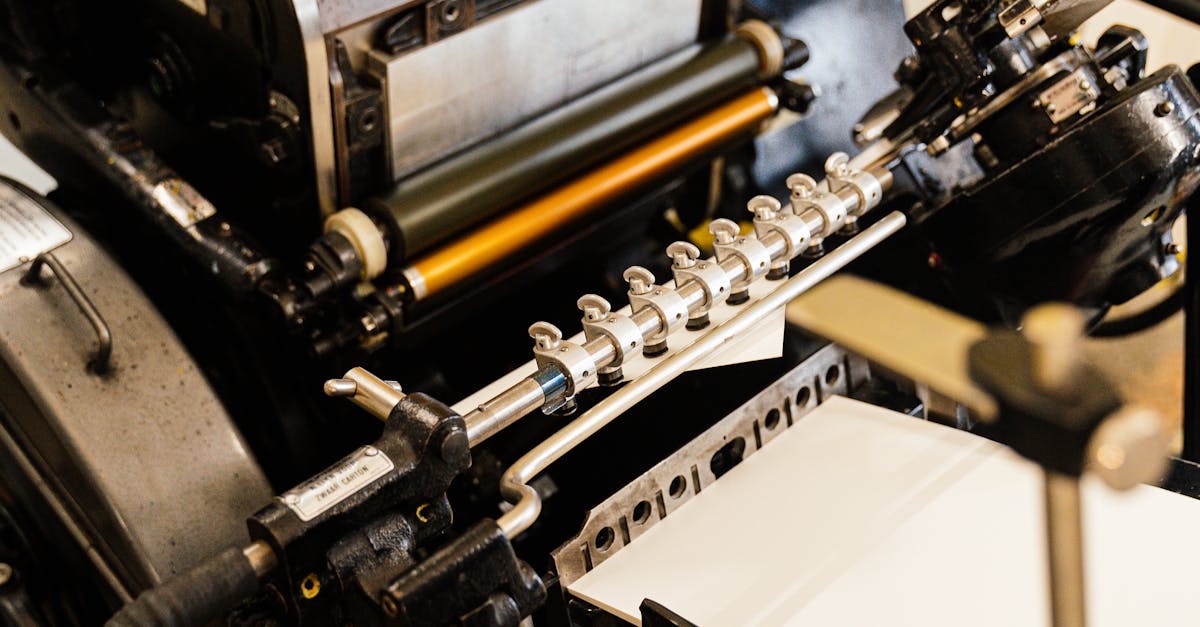We've upgraded our file system to make things even more secure. You can keep uploading the same way you always do - no changes needed. If you experience any issues, please get in touch with us at info@dumontprinting.com, and we'll address the matter promptly. Thank you for partnering with us!
Short-Run vs. Long-Run Printing: Which Is Right for Your Business?

If you’re a business, organization, or marketer, you’ve probably wrestled with one fundamental question when planning your next campaign: Should I choose short-run or long-run printing? At Dumont Printing, we’ve spent years helping companies—from restaurants and hospitals to startups and banks—figure out the sweet spot for their budget, goals, and brand vision. Let’s break down this essential decision, share our direct experience, and help you choose the right print strategy for your next project.

What Is Short-Run vs. Long-Run Printing?
We like to keep things clear. Here’s how we define it:
- Short-Run Printing: Lower quantities, fast turnaround, highly flexible. Usually from 1 to about 2,500 pieces—sometimes a bit more, depending on the product and print method.
- Long-Run Printing: Larger quantities done in a single go, often 10,000 or more. Great for securing the lowest unit price and ensuring brand consistency at scale.
Why the Distinction Matters
The right print volume can positively impact your:
- Budget: Low vs. high setup costs mean different per-unit savings over the run.
- Speed: Short-runs are nimbler and enable quicker revisions. Long-runs take longer but can lock down pricing.
- Inventory Management: Fewer leftovers or outdated pieces with short-runs, less frequent ordering with long-runs.
Comparing Short-Run and Long-Run Printing
| Factor | Short-Run Printing | Long-Run Printing |
|---|---|---|
| Typical Quantity | 1 to 2,500 | 10,000+ |
| Turnaround Time | 24–72 hours (digital) | 2–6 weeks (offset) |
| Setup Cost | Low (digital—almost zero) | High (offset plates) |
| Unit Price | Higher for small orders | Lower for big orders |
| Flexibility | Easy to update, customize | Stable, less adaptable |
| Best For | Testing, events, variable data, targeted mailers | Catalogs, large campaigns, established products |
When to Choose Short-Run Printing
Short-run isn’t just for when you want fewer pieces—it’s about being agile. Here are the most common reasons our clients go short-run:
- Testing a New Product or Service: Unsure if a new campaign or product will resonate? Print a limited batch of brochures or direct mail pieces to see what sticks before scaling up.
- Frequent Design or Content Updates: Have pricing or ingredient lists that frequently change (think restaurants, food services, or event promos)? Short-runs let you print just enough, then pivot fast.
- Personalization: Need variable data for different customers or regions? Digital short-run lets you tailor each piece—great for mailers, targeted flyers, or donor outreach.
- Events & Tradeshows: Custom event programs, handouts, and swag are often needed quickly and in modest quantities. Short-run lets you avoid excess inventory for single-use needs.
- Seasonal Campaigns: Limited-edition holiday flyers, custom packaging, or fundraising appeals benefit from printing what’s needed, when it’s needed.

Advantages of Short-Run Printing:
- Minimal waste—less overstock, less storage hassle
- Quick turnarounds for last-minute changes
- Cost-effective for small quantities
- Test more ideas in the market
When to Go Long-Run
Long-run printing shines when consistency and pricing at scale are top priorities:
- Established Products or Campaigns: If you know you need 50,000 direct mailers or 100,000 product labels, the price per piece with long-run printing can drop dramatically.
- Brand Consistency: Big brands, banks, and organizations with multiple locations often need every flyer, handbook, or annual report to look identical. Offset presses used for long-runs deliver high-quality, repeatable output at scale.
- Fulfillment & Distribution: If you’re planning mailed campaigns to a huge list, or stocking event materials, printing large quantities up front can simplify logistics.
- Bulk Discounts: The bigger the order, the lower your unit cost—valuable for fundraising events, magazine production, or packaging runs.

Advantages of Long-Run Printing:
- Lowest possible price per copy
- Uniform quality and color-matching across every item
- Ideal for mass mailers, catalogs, or product packaging
- Efficient for recurring or evergreen materials
How to Decide: The Real-World 5-Step Framework
- Think About Your Timeline
Short-run jobs can often be on press and out the door in just a couple of days. If your marketing calendar or regulatory needs are tight, speed matters. - Be Honest About Quantity
It’s tempting to print more because the price looks good, but will you use them? We’ve seen too many beautiful brochures tossed because the campaign evolved. - Factor in Design Revision
If your content is likely to change every quarter—or even more often—short runs prevent locked-in mistakes. Conversely, if your piece is evergreen, long-run saves money. - Calculate Storage Costs
Long-run printing often means storage fees, shelf space, and inventory tracking. For many organizations, unused inventory eats into savings. - Do the Math
Calculate the break-even point: (Long-run setup cost – Short-run setup cost) ÷ (Short-run per-unit cost – Long-run per-unit cost). This tells you at what quantity long-run becomes more affordable.
Hybrid Strategies: Get the Best of Both Worlds
Today, many clients benefit by combining both approaches—for example:
- Bulk print your core business cards or product labels (long-run)
- Short-run print custom mailers for local events or trials
- Use digital printing for regional versions, offset for the national version
Personalization and variable data printing are now easier than ever, so you can split your order to cover both bulk and custom needs efficiently.

How We Help You Decide at Dumont Printing
At our core, we’re partners who help you avoid costly mistakes. We ask the right questions:
- What’s your goal for this print piece?
- How long will the information stay relevant?
- Is speedy turnaround or minimizing waste more important?
- What matters more: unit price or flexibility?
Our broad range of capabilities—from digital short runs to offset long runs, wide-format, promotional, apparel, and variable data printing—lets us recommend what’s best for each unique situation.
Tips to Get the Most Value from Your Print Run
- Review your marketing plan and break up print needs by stability (timeless vs. timely campaigns)
- Ask about test prints or samples before running large orders
- Opt for variable data printing for donor mailings, event invites, or targeted offers to keep messaging focused
- Partner with a printer who offers both digital and offset options—so you don’t have to compromise quality or cost
- Plan your inventory strategically to avoid expensive rush jobs or wasted materials
FAQs about Short-Run vs. Long-Run Printing
Absolutely! Many organizations print core materials in bulk, but complement with customized or event-specific pieces in short runs.
Printing what you need, when you need it (a major benefit of short-run) helps reduce waste. Ask us about recycled papers and sustainable options for both print types.
Conclusion—Build the Print Strategy That Works for You
No two organizations have identical print needs, and that’s why there’s no “one-size-fits-all” answer to short-run vs. long-run printing. The best decision comes down to your timeline, flexibility needs, and how quickly your information or brand messaging might change. If you’re ever unsure—or you want a custom quote—reach out. We’re always here to help you print smarter, not just more. Connect with us at Dumont Printing for your next print project, and let’s make your marketing truly work for you.
